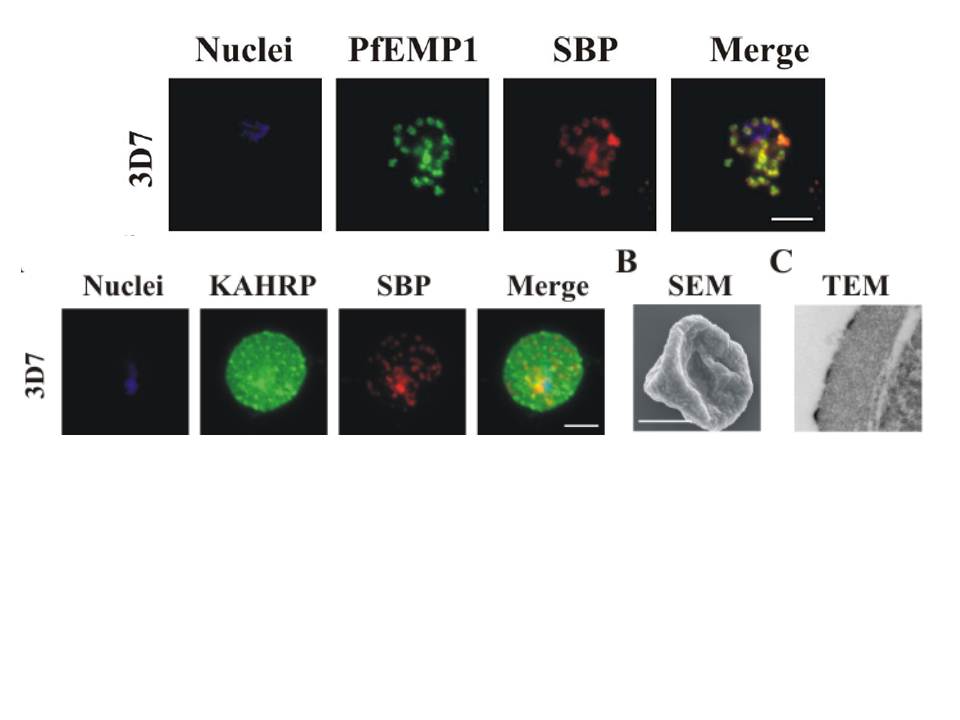Upper row: PfEMP1 traffics to the Maurer’s clefts. Immunofluorescence microscopy of acetone-fixed RBCs infected with 3D7 parasites probed with anti-PfEMP1 ATS antiserum (green) and anti-SBP1 (red) – top pictures, or with anti-KAHRP antiserum (green) and anti-SBP1 (red) – bottom picture. The nuclei were visualized with DAPI and parasites with a single nucleus were chosen for analysis. The data are typical of at least 30 cells examined for each parasite line. Scale bar: 5 μm. PfEMP1 accumulates at the Maurer’s clefts as confirmed by co-labelling with the resident Maurer’s cleft marker, SBP1.
Lower row: Immunofluorescence microscopy of acetone-fixed RBCs infected with 3D7 parasites probed with anti-KAHRP antiserum (green) and anti-SBP1 (red) and co-stained with DAPI (blue). Scale bar: 5 μm. KAHRP forms the main structural component of the knobs at the infected RBC surface in which PfEMP1 is concentrated. An anti-KAHRP antiserum gave a roughly homogenous staining pattern at the surface of RBCs infected with wild type 3D7.
Dixon MW, Kenny S, McMillan PJ, Hanssen E, Trenholme KR, Gardiner DL, Tilley L. Genetic ablation of a Maurer's cleft protein prevents assembly of the Plasmodium falciparum virulence complex. Mol Microbiol. 2011 81(4):982-93
Other associated proteins
| PFID | Formal Annotation |
|---|---|
| PF3D7_0202000 | knob-associated histidine-rich protein |
| PF3D7_0501300 | skeleton-binding protein 1 |
